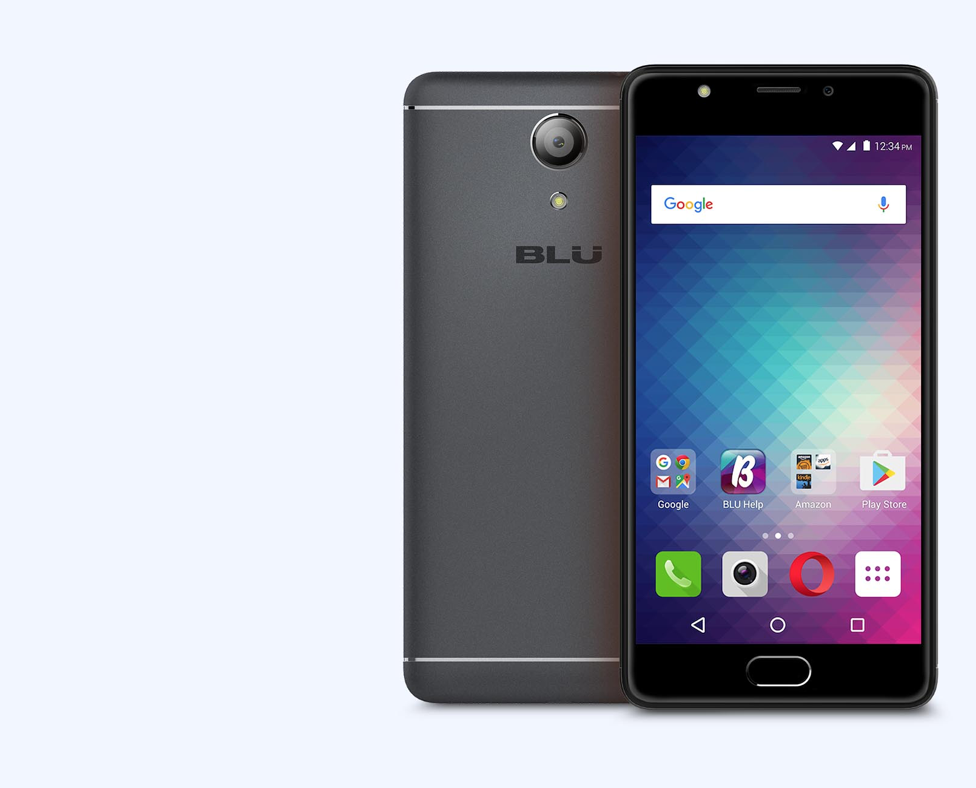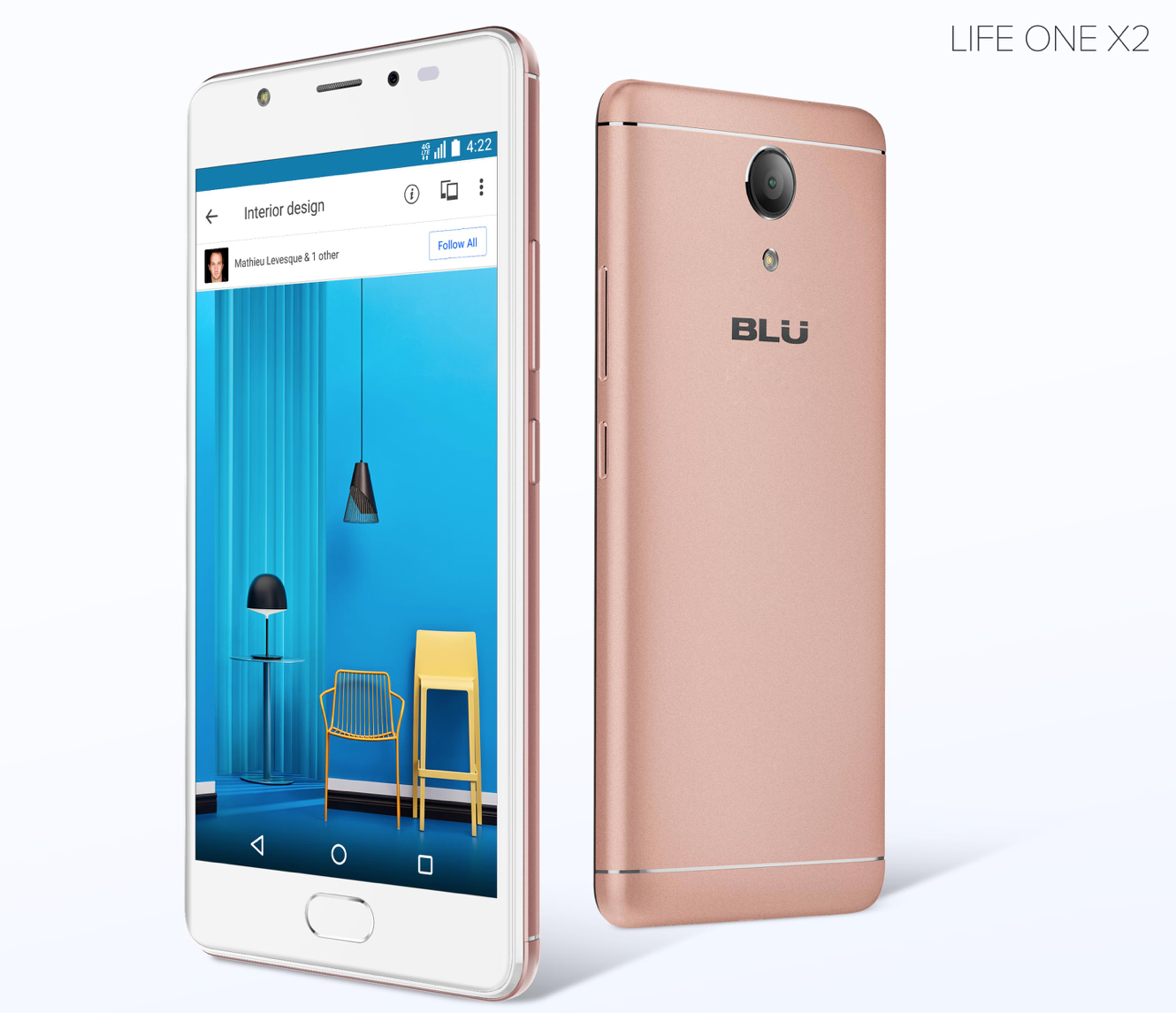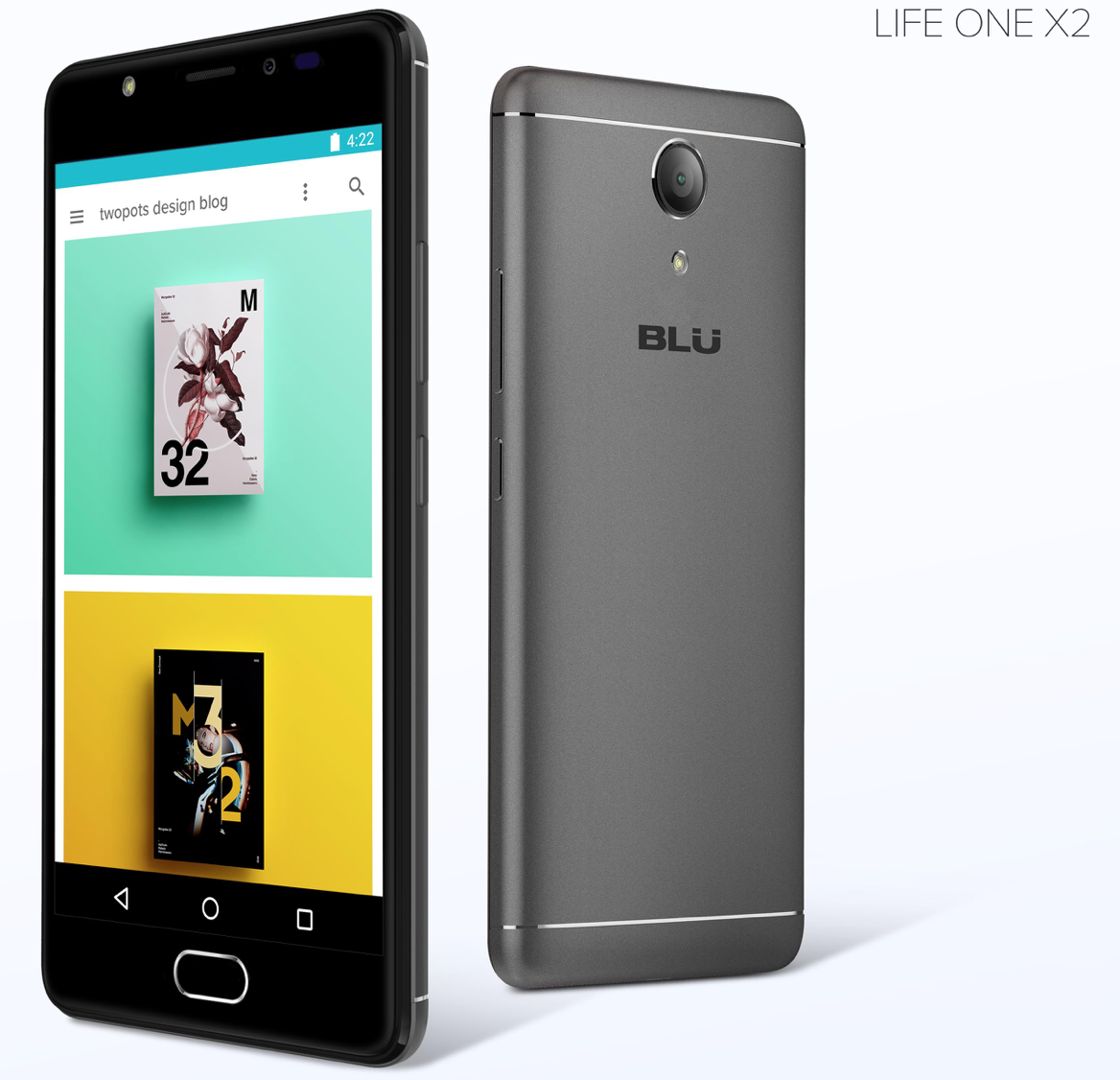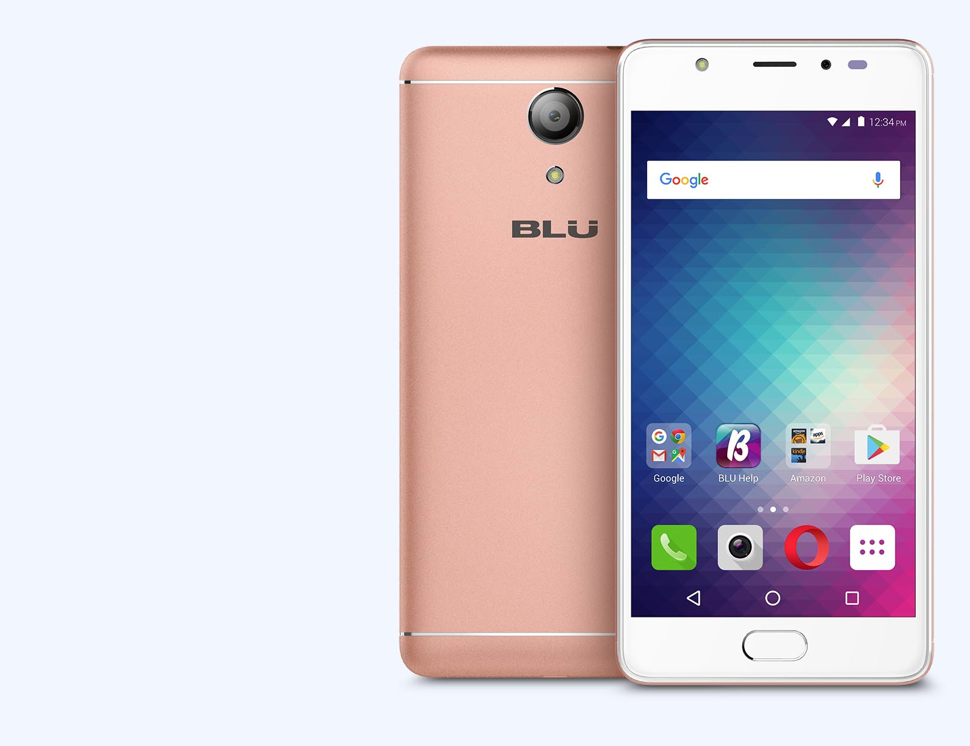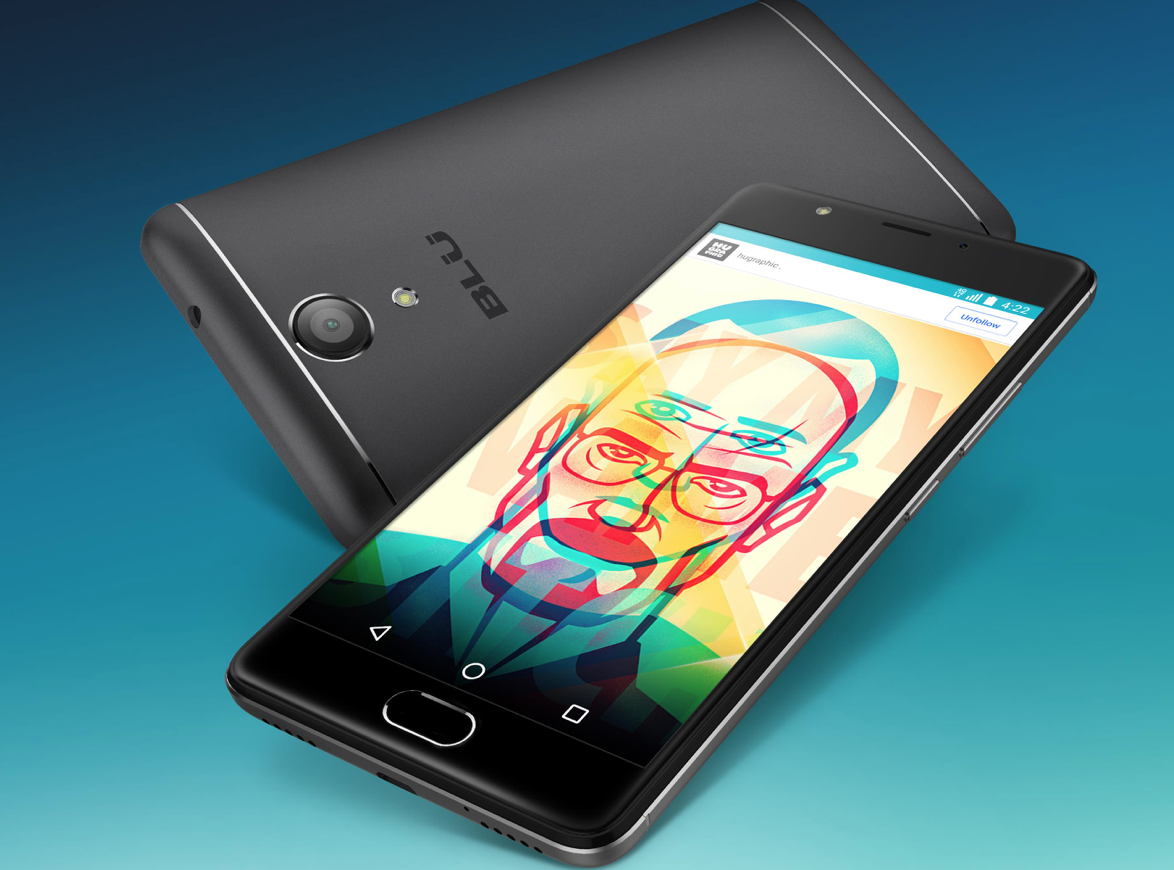What smartphone maker Blu lacks in product volume it makes up for in breadth and targeted pricing and affordability. The Florida-based firm has presented more than half a dozen phones this year alone, a relentless release cycle punctuated by flagships like the Pure XR, the Energy XL, and the Energy JR. And all are priced strategically, with laser precision, at every corner of the market spectrum: the Energy JR starts at $40; the Studio touch at $100; and the top-of-the-line Energy XL at $300.
So the fact that Blu is launching yet another handset isn’t all that surprising, really. But what is surprising is just how competitive the new phone, dubbed the Life One X2, is within a crowded field.
The Life One X2 is the successor to last year’s Life One X, and it’s an improvement in almost every respect. It features metal housing crafted from “premium materials” and a 5.2-inch Full HD (1,920 x 1,080 pixels) IPS display shielded by a curved protective coating, which is the same as its predecessor — but it offers substantial upgrades in the processing department.
Under the hood, the Life One X2 packs a Snapdragon 430 octa-core processor clocked at 1.4GHz — a step up from last year’s MediaTek 1.3GHz octa-core chip — and double the amount of RAM, or 4GB versus 2GB. The One X2 sports a slightly larger battery, too — 3,000mAh compared to 2,900mAh — and one that supports Qualcomm’s third-generation quick charging standard, to boot. Blu said that the Life One X can recharge up to four times more quickly than conventional handsets.
And just because the Life One X2 is impressively endowed in the silicon department doesn’t mean its other components are the weaker for it. Take the cameras, for instance: the rear 16MP shooter — up a few megapixels from last year’s 13MP sensor — sports a f/2.4 aperture and laser phase detection autofocus. The 8MP front-facing camera, meanwhile — up, too, from last year’s 5MP — sports an LED flash. And both benefit from proprietary camera modes like Auto Beauty and Image Brightness.
Beyond the Life One X2’s shooters are other accouterments that are worth a note. There’s a fingerprint sensor that responds to swipe gestures. There’s a SIM tray that accommodates up to two cards. And there’s Bluetooth 4.0 connectivity.
The Life One X2 isn’t without its shortcomings, granted. It eschews the increasingly popular USB Type-C port for a Micro USB-style connection. And extra RAM will cost you: at only $200, the 64GB variants pack 4GB of
That’s all to say that while the Life One X2 isn’t the king of the mid-range smartphone crop, it’s no slouch, either. Short of any showstopping flaws Blu neglected to disclose, it could well come to dominate at the $150 price point. Time will tell.
The Life One X2 is available for pre-order on Amazon in grey and rose gold. Customers who pre-order on September 22 and 23 will receive a 10-percent discount.
Editors' Recommendations
- You’ll have to imagine how fun the new OnePlus Nord 2 x Pac-Man phone looks
- Oppo Find X2 launches with whopping 3K-resolution screen
- The $440 Realme X2 Pro has what it takes to be one of 2019’s best phones
